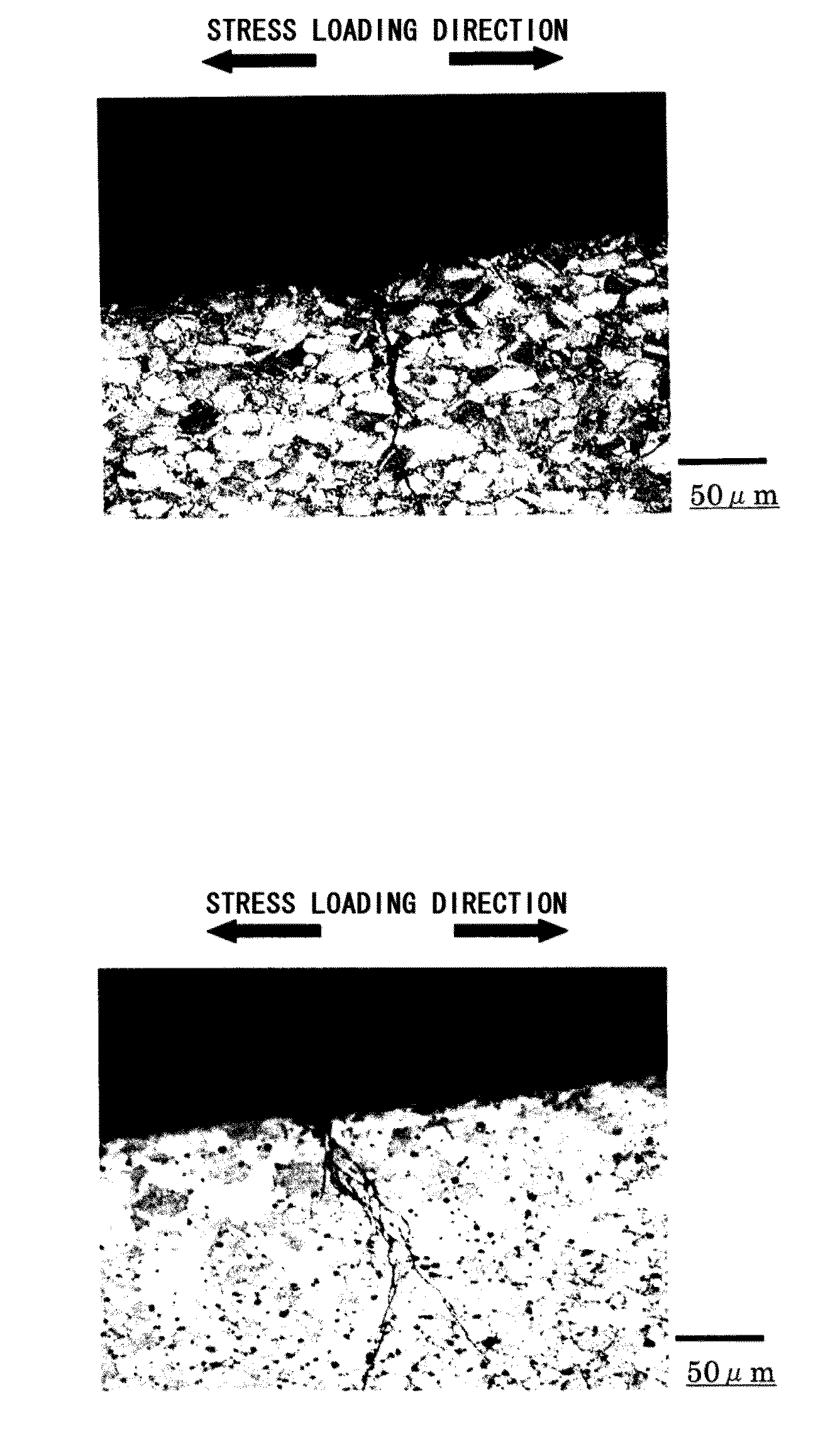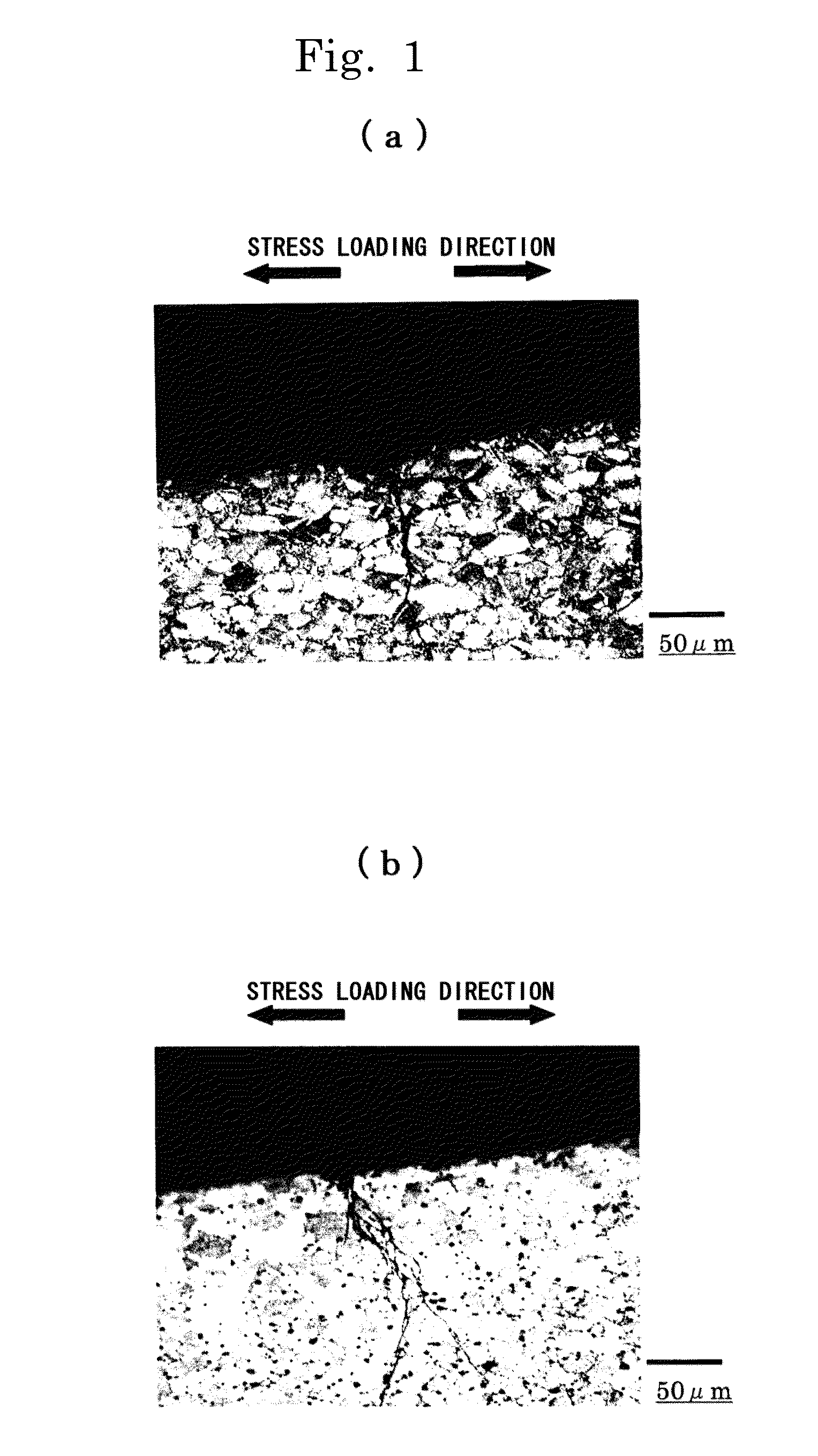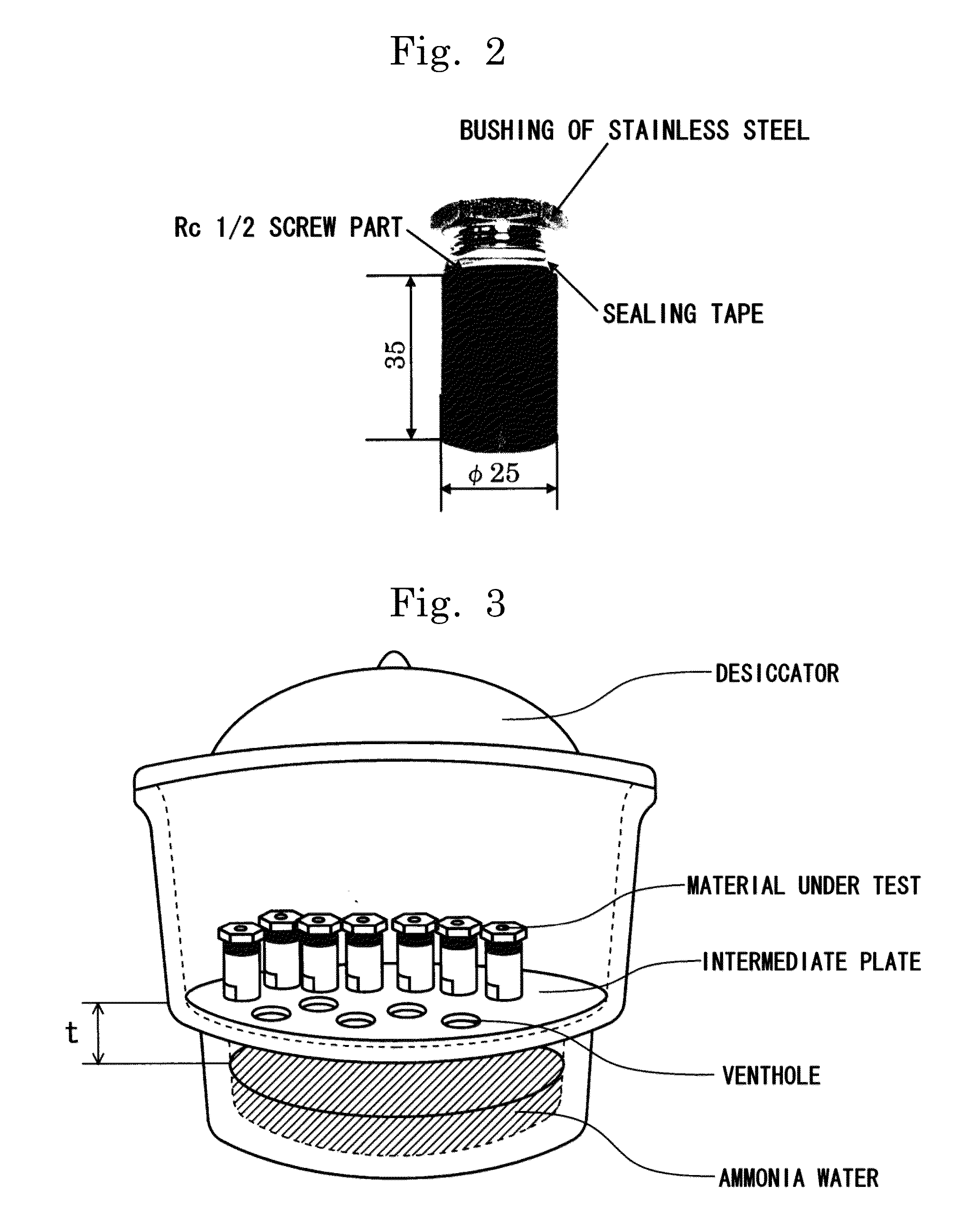Leadless brass alloy excellent in stress corrosion cracking resistance
a technology of stress corrosion cracking and leadless brass, which is applied in the field of leadless brass alloys, can solve the problems that brass alloys of this kind may induce stress corrosion cracks, and achieve the effects of speeding up the propagation of corrosion cracks, and enhancing stress corrosion cracking resistan
- Summary
- Abstract
- Description
- Claims
- Application Information
AI Technical Summary
Benefits of technology
Problems solved by technology
Method used
Image
Examples
example 1
[0128]First, an example showing the relation between the grain-surrounding average γ phase ratio and the stress corrosion cracking resistance will be described in detail. The “grain-surrounding average γ phase ratio” is defined by the following formula based on the average value of data obtained by measuring the circumferential length of the grain boundary (grain boundary of the grains (α phase)) and the length of the γ phase existing on the circumference at an optional section of an alloy and performing the measurement plural times.
Grain-surrounding average γ phase ratio[%]=(γ phase length / grain boundary circumferential length)×100 [Formula 1]
The “grain-surrounding average γ phase ratio” means showing the percentage of the γ phase being annularly distributed in the grain boundary. Therefore, the higher the “grain-surrounding average γ phase ratio”, the higher the probability of cracks coming into contact with the γ phase is. In addition, since the ratio shows the percentage of the...
example 2
[0135]Next, an example showing the relation between the number of contacts by the γ phase and the stress corrosion cracking resistance will be described in detail. The “number of contacts by γ phases” is defined by the following formula based on the average value and the root-mean-square deviation of the data obtained from the measurements, performed plural times, of the number of contacting γ phases per unit length set in the vertical direction relative to the stress load direction in an optional section of an alloy.
Number of contacts by the γ phase[places]=“Average value of the number of contacting γ phases”−“Root-mean-square deviation of the number of contacts by the γ phase” [Formula 1]
Therefore, the larger the “number of contacts by the γ phase”, the higher the probability of cracks coming into contact with the γ phase is. In addition, since the number of contacts by the γ phase shows the ratio of the γ phase distributing in the direction vertical to the stress load direction,...
example 3
[0153]Next, a test of Example 3 was conducted for the purpose of examining the relation between the Sn content of the Bi-based leadless brass alloy of the present invention and the stress corrosion cracking resistance and verifying an optimum addition range (content) of Sn relative to the stress corrosion cracking resistance. The method for producing test materials 7 to 16 of the present invention comprised dissolving raw materials in a high-frequency furnace, pouring a melt into a mold at a temperature of 1010° C. to produce casts of φ32×300 (mm) by the metallic mold casting.
[0154]The stress corrosion cracking test method comprised screwing a bushing of stainless steel having a sealing tape wound around it in an Rc ½ screw part of each test material as shown in FIG. 2 using a torque of 9.8 N·m, similarly to the case of the evaluation criterion test, and introducing the resultant test materials into a desiccator containing ammonia water having an ammonia concentration of 14% for a t...
PUM
| Property | Measurement | Unit |
|---|---|---|
| grain size | aaaaa | aaaaa |
| grain size | aaaaa | aaaaa |
| torque | aaaaa | aaaaa |
Abstract
Description
Claims
Application Information
 Login to View More
Login to View More - R&D
- Intellectual Property
- Life Sciences
- Materials
- Tech Scout
- Unparalleled Data Quality
- Higher Quality Content
- 60% Fewer Hallucinations
Browse by: Latest US Patents, China's latest patents, Technical Efficacy Thesaurus, Application Domain, Technology Topic, Popular Technical Reports.
© 2025 PatSnap. All rights reserved.Legal|Privacy policy|Modern Slavery Act Transparency Statement|Sitemap|About US| Contact US: help@patsnap.com



